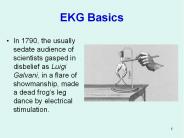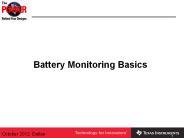The Basics of... - PowerPoint PPT Presentation
1 / 21
Title:
The Basics of...
Description:
The Basics of... Confined Space 60 deaths in 1992 85 deaths in 1996 60% of deaths come about when someone tries to rescue someone else! What is a confined space? – PowerPoint PPT presentation
Number of Views:42
Avg rating:3.0/5.0
Title: The Basics of...
1
The Basics of... Confined Space
60 deaths in 1992 85 deaths in 1996
60 of deaths come about when someone tries to
rescue someone else!
2
What is a confined space?
1. It must have limited openings for entry and
exit 2. It must have unfavorable natural
ventilation which could contain or produce
dangerous air contaminants 3. It is not intended
for continuous employee occupancy.
3
any space having a limited means of egress,
which is subject to the accumulation of toxic or
flammable contaminants or has an oxygen deficient
atmosphere. Confined or enclosed spaces include,
but are not limited to, storage to, storage
tanks, process vessels, bins, boilers,
ventilation or exhaust ducts, sewers, underground
utility vaults, tunnels, pipelines, and open top
spaces more than 4 feet deep such as pits, tubs,
vaults, and vessels. OSHA Standard
4
Confined Space vs. Permit-Required Confined Space
5
Confined Space
1. A person can fit into it 2. There is limited
egress and entry 3. It is not designed for
continuous work by workers
6
Permit-Required Confined Space
- 1.There is a potential for it to accumulate or
contain a hazardous atmosphere - 2. There is material in it that has the potential
for engulfing a worker or any other personnel - 3. There is the potential to trap or asphyxiate a
worker because of the nature of the space - 4. There are other potential safety and health
hazards present
7
OSHA 1910-146 Confined Space Standard Appendix A
8
- Step-by-step procedures
- Identify all confined spaces at all facilities.
- Make sure all employees and personnel know what
areas are considered confined spaces and make
sure that they are clearly labeled as such by
posting the appropriate signs.
9
3. Identify all personnel who will be authorized
to enter the confined spaces and train them in
all the procedures inherent in confined space
work. 4. Make sure that all required Personal
Protective Equipment (Tyvek suits, respirators,
gloves, etc) are in stock and available for all
authorized personnel when they should need
it. 5. Plan for and have available all rescue
and retrieval equipment necessary for getting
worker(s) out of the confined space (conscious or
unconscious) if the need should arise.
10
6. Measure and monitor the air quality inside the
confined space before entry and at all times
while work is being done inside the confined
space using gas monitors. Use ventilation and
blowers if necessary to maintain the quality of
the air. If the air quality cannot be improved
then the confined space should be considered
Immediately Dangerous to Life and Health (IDLH)
and the appropriate respirator should be used at
all time by all workers while in the confined
space. 7. Make sure that there is an attendant
outside of the confined space at all times in
order to provide rescue and retrieval if
needed. 8. Make sure that the CONFINED SPACE
ENTRY PERMIT (See appendix Two) is properly and
completely filled out and signed by the entry
supervisor prior to entry by any personnel.
11
9. Establish proper communication procedures so
that all workers are in constant contact with the
attendant(s) outside the confined space. 10.
Identify, implement and monitor all lockout
procedures both inside the confined space as well
as those outside the confined space that could
potentially have an effect on the conditions
inside the confined space and/or on the
attendant(s) outside the confined space.
12
Confined Space Air Monitoring
13
1. Prior to any worker entering a confined space,
the quality of the air must be determined. This
is most often done using a confined space air
monitor that measures H2S, CO, LEL and O2.
Additionally, if there is reason to suspect some
other type of gas (ammonia in food processing
plants, for example) then steps should be put in
place to make sure to monitor for those as well.
14
2. If the air quality is not acceptable,
ventilation should be used to circulate the bad
air out and to bring in breathable air.
15
3. Once the air quality is within the acceptable
range, workers may enter the confined space to do
the required work. Continued monitoring of the
air quality is required for as long as there is
still anyone inside the confined space as air
quality can change at any time.
16
Protecting confined spaces openings
17
Ventilating confined Spaces
Confined Space Ventilation falls into two
categories 1. Push Ventilation This is when
fresh air is blown (pushed) into a confined
space 2. Pull Ventilation This is when the bad
air is sucked out of the confined Space
18
(No Transcript)
19
Confined Space Rescue and Retrieval
20
(No Transcript)
21
THANK YOU!































